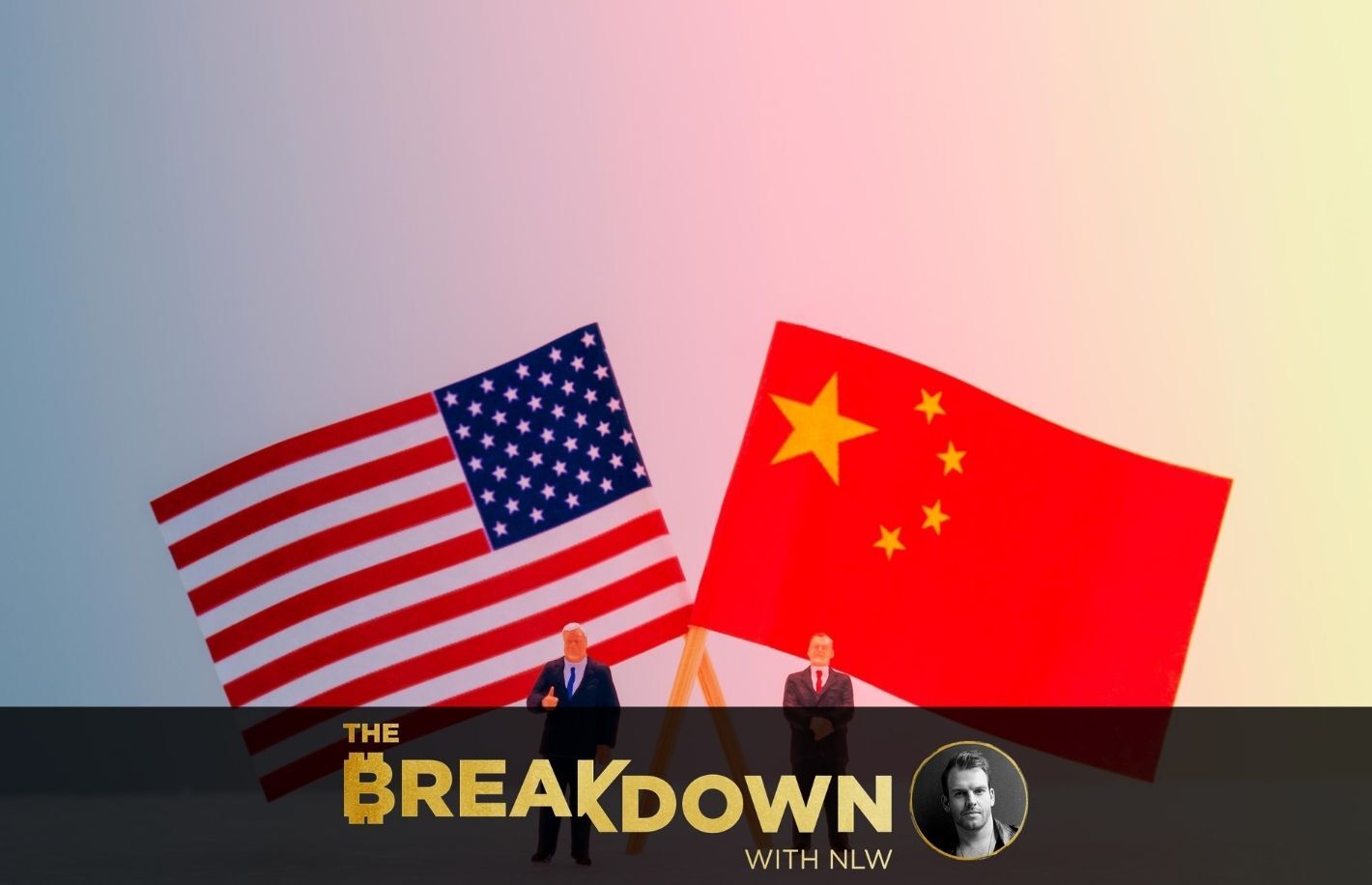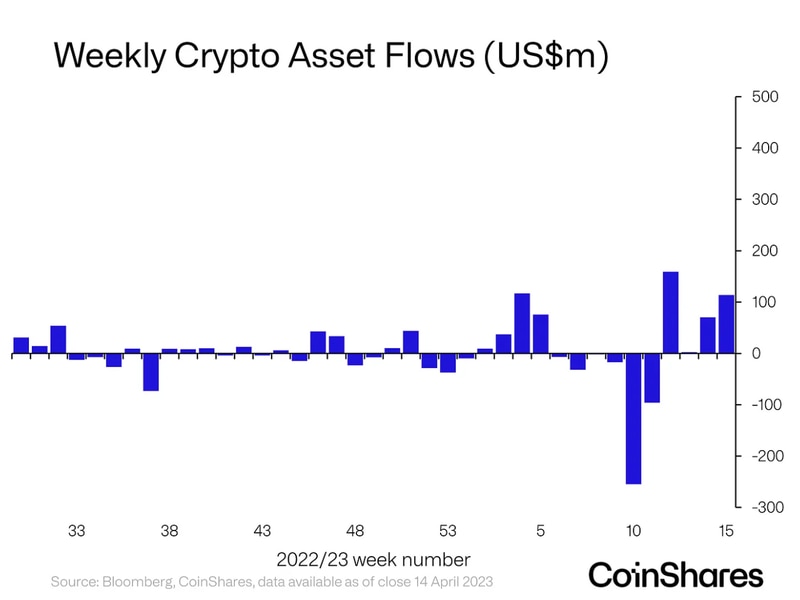The Protocol: Crypto Turns Up Nose at Trump Token Sale, ‘Gold Paper’
Crypto traders and industry executives have expressed favor toward Republican U.S. presidential candidate Donald Trump’s policies on Bitcoin and digital assets. That predisposition has not translated to a fondness for the decentralized-finance project he is actively promoting, World Liberty Financial, or its WLFI tokens – as he found out this week. (Spoiler alert: The tokens are not exactly flying off the shelf.)

02:04
Tesla Is Moving Bitcoin; Trump-Supported Token Falls Flat

11:08
MoneyGram Announces Its Latest: MoneyGram Wallet

01:31
Bitcoin ETFs Are “Trojan Horse for Adoption”: Bernstein

02:28
Trump Pumps DeFi Token Sale; Bitcoin Price Jumps Above $65K
-
Kamala Harris’s “opportunity agenda” falls short on crypto-policy details.
-
Bitcoin’s ecosystem is creeping not leaping, argues Coinbase’s research chief.
-
Answering questions you didn’t know you needed to ask about decentralized exchange Uniswap’s new layer-2 chain.
-
A new way of ranking blockchain oracle projects – with a different result.
-
Tesla’s bitcoin transfers.
-
$76 million of blockchain project fundraisings.
-
Top picks from the past week’s
Protocol Village
column: Karate Combat, Hedera, Nexus, RootstockLabs, BitVMX, The Depository Trust & Clearing Corporation (DTCC), Ben Rubin, Towns.
This article is featured in the latest issue of The Protocol, our weekly newsletter exploring the tech behind crypto, one block at a time. Sign up here to get it in your inbox every Wednesday.
Network News
:format(jpg)/cloudfront-us-east-1.images.arcpublishing.com/coindesk/NWLHJNZH5FDCRNWNS6TWQLTEME.jpg)
Screenshot from title page of World Liberty Financial’s “Gold Paper,” published this week (World Liberty Financial)
SMALL HANDS? A crypto project endorsed by U.S. Republican presidential nominee Donald Trump pushed forward with a plan to raise hundreds of millions of dollars by selling tokens. But demand for World Liberty Financial’s WLFI tokens proved underwhelming, with an Ethereum wallet connected to the effort holding crypto proceeds of just $11 million as of press time, or roughly 3.6% of the amount allocated to the public sale – not even enough to cover a reserve for basic expenses.
Loyal readers of The Protocol will recall that CoinDesk was first to report, in early September, on the secret planning for World Liberty Financial – mostly confirmed a couple weeks later. We also chronicled the dismay over the project from hardcore Bitcoiners, who typically hate the idea of selling easily minted tokens, prompting some of them to reconsider their political support for Trump.
Finally, last week, official details of what the project actually is, or aims to be, began to emerge: Still to be developed and launched, it’s a “best-in-class consumer application,” distinguished by “simple onboarding and familiar UI/UX via one-click social login and wallet creation,” according to a blog post. (UI/UX is shorthand for user interface and user experience.) Under the hood, the project plans to operate an instance of the decentralized-finance (DeFi) project Aave atop the Ethereum blockchain, with plans to eventually deploy on the layer-2 network Scroll, according to the blog. World Liberty Financial even posted a “temperature check” proposal to the Aave governance discussion forum to gather community feedback. One commenter inquired aloud whether the deal made sense for Aave, given that the Trump-affiliated project would promise 20% of revenue to Aave, “compared to 100% from the main Aave instance,” and added that “it’s worth evaluating whether this might lead to internal competition between Aave’s current market and WLF’s, or if the growth from new users and increased liquidity will far exceed any potential downside.” One snarky poster wrote that “the irony of a man notorious for not paying back creditors launching a decentralized lending protocol is almost too good to be true.”
Several notable crypto figures joined a Spaces session on X on Monday to promote the token launch, including Stani Kulechov, founder of Aave; Sandy Peng, co-founder layer-2 network Scroll; and Luke Pearson, senior research cryptographer, Polychain Capital. “My DM’s have been blowing up since this project happened,” Scroll’s Peng volunteered. Project officials said on the Spaces that some 100,000 users had already been whitelisted to claim the tokens.
Additional details came on Tuesday when the project released a “Gold Paper” with lots of fine print, including the revelation that the initial $30 million of “net protocol revenues” – including token sale proceeds – would be set aside to cover “expenses, indemnities and obligations” – and that most of the rest of the money would go to a company called “DT Marks DEFI LLC,” whose owners and principals include Donald Trump. (That company also was allocated 22.5 billion $WLFI tokens, worth about $337 million at the fixed price of $0.015 each.)
The public token sale opened early in U.S. business hours on Tuesday, though the website for claiming the tokens quickly crashed and was down for most of the morning; there was virtually no communication from the team about what was happening. Commenters on the social-media site X widely noted that the token was “non-transferrable,” seen as a serious drawback for fast-moving crypto trading types. At about 7 p.m. ET, Trump took to X to tout the token sale, writing “Today’s the day! @WorldLibteryFi token sale is live.” After apparently discovering that World Liberty Financial’s X handle had been misspelled, the post was deleted, and then reposted with the properly spelled handle, @WorldLibertyFi.
The extra promotion didn’t appear to have much of an impact, with sales continuing at a trickle. As of Wednesday, some 761.8 million tokens have been sold, out of 20 billion offered, according to a dashboard on the crypto-tracking website Dune Analytics.
Dave Rodman, founder and managing partner of Rodman Law Group, who counts digital-assets and venture capital among his practice areas, told CoinDesk in an emailed comment that World Liberty Financial appears fraught with both securities-regulation and campaign-finance risks – “a joke project designed to extract value from purchasers in a very cynical manner whose principals will likely not face any real consequences and in the worst scenario, only serve to hurt this industry’s reputation in the long run.” Here was the Bankless newsletter’s take: “Whether the project can overcome skepticism and regain momentum remains to be seen, but the rocky start is a reminder that high-profile backers aren’t a guarantee for success in DeFi.”
It’s important to note here that the team behind World Liberty Financial has not responded to CoinDesk’s repeated requests for comment over the past two days.
-
Vice President Kamala Harris touted her “opportunity agenda” during a campaign speech on Monday
without elaborating on what it would mean for digital assets
. Earlier in the day, the campaign unveiled the broad
agenda
, which included the first thing resembling a substantive policy position from her on cryptocurrencies. But anyone hoping for more details from her speech in Erie, Pennsylvania, was left disappointed.
-
Tigran Gambaryan, the crypto exchange Binance’s head of financial crime compliance, who has been detained in Nigeria since February, was
denied bail
by a judge in the country, a family spokesperson said Friday. He has been in the notorious Kuje prison, facing charges including money laundering.
-
Coinbase Head of Research David Duong published a
lengthy report
on
Bitcoin’s blooming ecosystem of layer-2 networks
, designed to accommodate faster and cheaper transactions, as well as greater programmability. But the report cautioned that “many of these protocols are in their early development stages, so we think it will likely take time for their utility in the Bitcoin ecosystem to be fully realized.” He wrote that “many of the network’s L2s are mainly sourcing capital from among crypto natives within the Bitcoin ecosystem, while the lion’s share of bitcoin unsurprisingly still remains on the L1. Moreover, bitcoin accumulation is happening more and more via spot bitcoin ETFs and other exogenous sources.”
-
Ethereum suffers from “middle-child syndrome
,” Zaheer Ebtikiar of Split Capital wrote on X. “The asset is not in vogue with institutional investors, the asset lost favor in crypto private capital circles, and retail is nowhere to be seen bidding anything at this size.”
Uniswap’s New Layer-2 ‘Unichain’ on OP Stack: Industry Reactions
:format(jpg)/cloudfront-us-east-1.images.arcpublishing.com/coindesk/PIUMJUDA4FBA7F2JVKZYY5VKMY.jpg)
Uniswap Labs CEO Hayden Adams (Uniswap Labs)
The developer behind Uniswap, the biggest decentralized exchange, announced plans for Unichain, its own layer-2 network atop Ethereum, built with technology borrowed from the Optimism ecosystem. We rounded up some of the commentary.
-
Per
Messari’s Kinji Steimetz
: “Unichain can’t incentivize liquidity through traditional means since the token has already been released, eliminating the possibility of airdrop farming for TVL…. The most plausible path for Unichain to gain traction could be something akin to the Base launch, where people bridged over to chase early memecoin opportunities. With Unichain, UNI now has a potential path to monetization as an L2 token.”
-
Per
Coinbase Research
: “The network is designed to facilitate ‘seamless multi-chain swapping’ among Superchain L2s while supporting ERC-7683 to enable broader interoperability for non-Superchain L2s. But the
documentation
provided by Uniswap doesn’t detail an explicit plan for how it will migrate existing liquidity from the Ethereum base layer to the new L2, nor does it confirm whether this is even necessary for Unichain’s immediate strategy.”
-
Eric Waisanen, cofounder of Astrovault, an automated market maker, wrote in an
op-ed for CoinDesk
that, “Despite the platform’s continued success and prominence within DeFi, serious questions remain about the sustainability of its business model and those of similar automated market makers (AMMs).”
-
DeFi Report founder Michael Nadeau noted that “instead of paying $368 million in settlement fees to Ethereum validators, Uniswap Labs and potentially UNI holders would capture all that value when they launch on Unichain,”
according to a story by Unchained
.
Money Center
:format(jpg)/cloudfront-us-east-1.images.arcpublishing.com/coindesk/LZQCR6O5CJBY3J5WBJQIRL4A24.png)
-
Predicate, a project to build a “network for simplifying transaction prerequisites,” has raised $7 million led by 1kx and Tribe Capital. According to a thread on X: “As was the case for apps like Venmo and Uber, pre-transaction rules become a critical building block as Web3 apps scale into the broader global economy. Predicate brings this concept on-chain, offering a library of prerequisites enforceable in a trust-minimized way. At the core of our system is the Predicate function, which evaluates conditions and returns true or false, deciding whether an onchain action can proceed. Predicates are the foundation for rules, which are stacked to form policies. Any entity – individuals, DAOs, organizations – can create and manage policies, which use both onchain and offchain data like flow-of-funds, allowlists, and verifiable credentials.”
-
Others (Details in
Protocol Village
column): Ithaca ($20M), Solv ($11M), PiP World ($10M) Mento ($10M), Yala ($8M), Apex Fusion ($6M), Blockcast ($2.85M), Moonveil ($2M)
:format(jpg)/cloudfront-us-east-1.images.arcpublishing.com/coindesk/NIPXUBUDRFCVLBWVW2X5726V6E.jpg)
Kadena’s Alana Ackerson (Kadena)
-
Kadena, a proof-of-work blockchain that says it can scale to power global financial systems by
braiding together multiple Bitcoin-like chains
, has appointed Alana Ackerson, a executive of Thiel Foundation, SoFi and Digital Currency Group, as strategic advisor, “marking a strategic push into asset management and institutional tokenization.” Ackerson previously served as CEO of HQ Digital, a wealth management subsidiary of DCG that catered to crypto millionaires, and she co-founded Figure, a crypto unicorn best known for its blockchain-powered home-equity lines of credit, according to the team. She also led the Thiel Foundation as CEO.
-
SingularityDAO Plans to Merge With Cogito Finance, SelfKey to Form AI-Focused Layer-2
-
Ripple Names Exchange Partners for Stablecoin RLUSD, Awaits NYDFS Approval
Who’s the Biggest Blockchain Oracle? It Depends
:format(jpg)/cloudfront-us-east-1.images.arcpublishing.com/coindesk/D5BSMACQ65AE5O4MYMWIMD4V7U.png)
Comparison of market-share rankings for oracle projects based on total value secured (left) and total transaction value (Blockworks Research)
A recent Blockworks Research report on blockchain oracle projects was brought to our attention, showing different ways of ranking them – and how starkly different the results can be.
Oracles are crucial for DeFi systems because they deliver off-chain information – such as cryptocurrency prices – onto blockchains, where it can be read and processed by decentralized applications and smart contracts.
One thing to note here is the huge disclaimer that the Blockworks research was funded by Pyth Data Association, an organization supporting the blockchain oracle project Pyth, which clearly benefits from the report’s conclusions.
The report notes that “total value secured,” or TVS, has historically been the most popular way of ranking these projects. The metric is described as “how much value is secured by each oracle, which is the equivalent to the total pool of value that would be lost if an oracle malfunctioned or reported incorrect prices in a worst case scenario.”
“TVS, at best, measures a pool of financial assets associated with an oracle’s services, but completely eschews the application’s activity associated with an oracle,” according to the author, Ryan Connor.
An alternative metric is total transaction value, or TTV, which is “more strongly correlated to frequency of oracle price updates and therefore oracle revenue,” according to Connor.
“We think the flaws in TVS, combined with the increasing demand for speed in DeFi ecosystems, and the necessity of DeFi to compete with centralized exchanges, makes TTV the most useful, publicly available key performance indicator for assessing oracle fundamentals today,” the report concludes.
Protocol Village
Top picks of the past week from our Protocol Village column, highlighting key blockchain tech upgrades and news.
:format(jpg)/cloudfront-us-east-1.images.arcpublishing.com/coindesk/DGPCDQ23ZFDTTOV4MIR3SDE6NA.jpg)
Karate Combat’s Tech Hustler and Tactical Investing fight at CoinDesk Consensus in May 2024 in Austin, Texas. (Shutterstock for Consensus)
-
Karate Combat, a Web3-enhanced professional contract sports league, is launching UP, a layer-2 blockchain and crypto-native software licensing platform built on Hedera in Q1 2025, according to the team. “Partners on UP can clone, customize and launch KC’s native mobile apps with no licensing fee. The $UP token is expected to launch in 2025.” According to a press release: “The software stack includes native iOS and android mobile apps, a web app and an on-chain backend.”
-
Nexus, developer of a zero-knowledge virtual machine zkVM written in Rust, says it has launched the first beta release of the Nexus network, “the world’s first open prover network.” According to the team: “This is the first distributed zero knowledge VM-based prover network that is accessible to anyone. The network aggregates the collective power of any connected device, from massive GPU farms to your computer or phone. Our goal is to unite the world’s computers into a single supercomputer that will be able to prove all the Internet’s computations, unlocking the Verifiable Internet.”
-
Sergio Lerner, chief scientist at RootstockLabs, announced that development has begun on Union, a new permissionless and trust minimized bridge based on
BitVMX
and the disputable computing paradigm. According to the team: “In addition, it was confirmed that the full codebase for BitVMX will be open sourced as a gift to the Bitcoin community. BitVMX unlocks a whole host of new use cases for Bitcoin, including the creation of new Bitcoin L2 light clients, zero-knowledge contingent payments and autonomous bug bounty programs. These announcements were made on stage during Bitcoin Amsterdam.”
-
The Depository Trust & Clearing Corporation (DTCC), a post-trade market infrastructure for the traditional financial industry, unveiled “DTCC Digital Launchpad,” described as “an industry sandbox intended to bring together financial market participants and clear the path to scalable adoption of digital assets. As an open ecosystem, DTCC Digital Launchpad will feature market participants, technology providers and others working together to identify and collaborate on meaningful pilots that have a clear path to production. “We’ve reached a critical inflection point in the adoption of digital asset technology,” said Nadine Chakar, global head of DTCC Digital Assets.”
-
Ben Rubin, the former founder of HouseParty and Meerkat, has launched Towns, a decentralized messaging platform built on the River Protocol. According to the team: “Towns enables secure, permissionless group chats designed for digital communities, allowing users to own and manage their spaces. Key features include end-to-end encryption, decentralized ownership, and a reputation system that prioritizes privacy. Backed by a16z, Towns aims to blend the user-friendly experience of Web2 messaging with the incentives of Web3, offering a secure alternative to traditional platforms often criticized for privacy concerns.”
Calendar
-
Nov. 10:
OP_NEXT
Bitcoin scaling conference, Boston.
Nov. 11-14:Websummit
, Lisbon.
-
Jan. 21-25:
WAGMI
conference, Miami.









